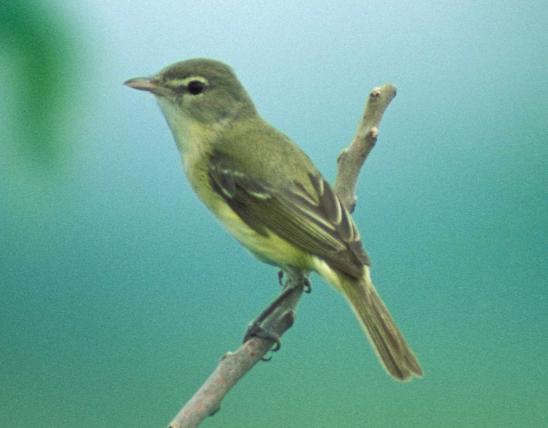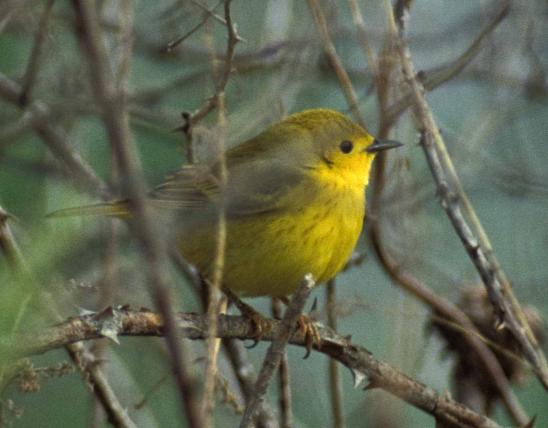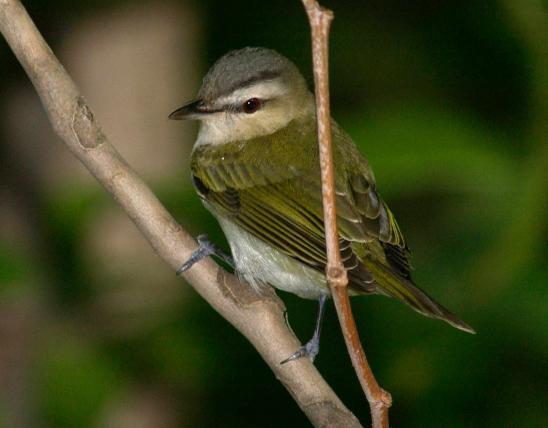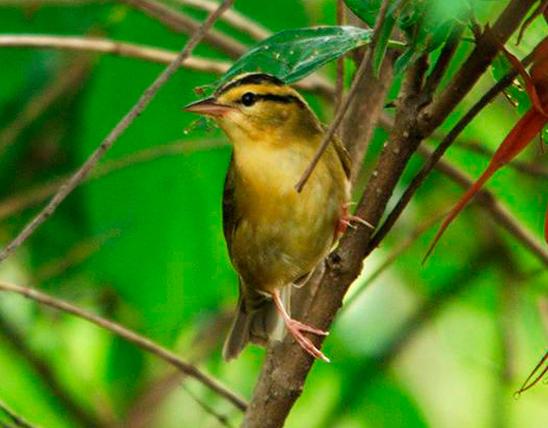Adult yellow-throated vireo upperparts are olive with a gray rump, two white wing bars, and pronounced yellow “spectacles”: a yellow eye ring connected to a yellow line in front of the eye. Underparts are yellow on throat and breast, and white on belly and under tail feathers. As with other vireos, the bill is relatively thick, until the tip, and it has a small hook that can be seen from below. Song is similar to that of the red-eyed vireo but is given at longer intervals and is not whistled as clearly. The two- and three-syllable phrases are interspersed with a loud, two-syllable phrase that sounds like three-EIGHT or CRE-atte. The song is hoarser than that of the blue-headed vireo.
Similar species: Often confused with the pine warbler, which is distinguished by dark streaks on the sides of the breast and a lack of obvious yellow “spectacles.” The yellow-breasted chat, another warbler, has no wing bars, has white spectacles, and is larger. All warblers can be distinguished from vireos by their narrow, tapering, sharply pointed (not hooked) bills.
Length: 5½ inches.
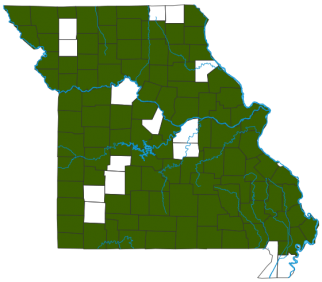
Statewide.
Habitat and Conservation
Lives in bottomland forests, open woodlands, parks, upland pine-oak forests, and suburbs with mature trees. It spends a lot of time in the upper half of trees and is associated with the edges of wooded areas. For successful breeding, a population of yellow-throated vireos requires large, unbroken tracts of wooded habitat. As with many other vireos, your best strategy for finding them is to learn the song, go to the likely habitat and region, and listen for the voice — then search with binoculars.
Food
Forages in trees, moving slowly carefully inspecting the area around it, for insects on leaves and twigs of trees. Prior to migration and during the winter, their diet includes more berries.
Status
Uncommon summer resident.
Life Cycle
Nests are built in tall trees, anywhere from chest-high to 30 feet above the ground. The cup nests are made of strips of bark, grasses, and other fine dry plant fibers, bound together with spider web, and attached at the rim to the fork of a small branch. The outside of the nest is decorated with lichens, cocoons, and other objects. A clutch comprises 3–5 eggs. They appear in Missouri from March through early October. They spend winters in Central America and the northern part of South America.
Human Connections
When people break up large tracts of woods by building roads, homes, and other buildings, and clearing patches of land for farms, they inadvertently cause the decline of many forest bird species. Brown-headed cowbirds can live in the newly cleared areas, gaining access to many birds whose nests they parasitize.
Ecosystem Connections
Vireo nests are often parasitized by brown-headed cowbirds, which lay their eggs in the host bird’s nest and whose young subsequently outcompete for food and usually cause the death of the host bird’s own young. Cowbirds live in open areas and rarely penetrate far into deeply wooded habitats. Many bird species that are adapted for life in deep, unbroken wooded habitats have not developed the behaviors for recognizing the unwanted foster birds and outwitting the cowbirds.
About 350 species of birds are likely to be seen in Missouri, though nearly 400 have been recorded within our borders. Most people know a bird when they see one — it has feathers, wings, and a bill. Birds are warm-blooded, and most species can fly. Many migrate hundreds or thousands of miles. Birds lay hard-shelled eggs (often in a nest), and the parents care for the young. Many communicate with songs and calls.























